![]() by Serena Jayne
by Serena Jayne
The rebirth of the earth during spring signals the opportunity for new beginnings. Spring is the epitome of a juice cleanse after scarfing down an entire box of Girl Scout cookies. Spring cleaning allows people to shed their hoarder habits, and finally locate their lucky socks. There’s no better time than spring to take an inventory of one’s life, and use the fresh start to focus on what truly matters.
Charles Prendergast’s painting “Untitled (Rites of Spring),” which is a part of the Art Institute of Chicago’s collection, shows a number of maidens frolicking in celebration of the season. The gold and silver leaf makes the scene sparkle and shine. Even the birds look happy. Spring is not only in the air, but in the minds and hearts of every joyful creature depicted.

The seasons progress much like the triple goddess expressed as maiden, mother, and crone. Spring is the fresh-faced maiden, unspoiled and full of opportunity. Summer becomes the mother, whose energy is shifted to her kiddies who keep her busy chasing rainbows and unicorn dreams under a sunny sky. Fall and winter symbolize the crone, who brings wisdom and sometimes icy regret, a far cry from the promise and hope of spring.
In Greek Mythology, Hades abducts a maiden named Persephone and takes her to his home in the Underworld. Her mother Demeter, the goddess of agriculture among other things, expresses her grief over the loss of her daughter by making the earth barren.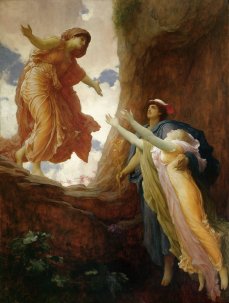 Persephone’s return from the Underworld is arranged, but because of the pomegranate seeds she’d consumed there, Hades maintains a hold on her. A kind of shared custody agreement is struck, where she splits her time between Earth and the Underworld. When mother and daughter are reunited, Demeter’s icy exterior melts bringing spring. The Earth remains fertile until Persephone’s return to the Underworld come fall.
Persephone’s return from the Underworld is arranged, but because of the pomegranate seeds she’d consumed there, Hades maintains a hold on her. A kind of shared custody agreement is struck, where she splits her time between Earth and the Underworld. When mother and daughter are reunited, Demeter’s icy exterior melts bringing spring. The Earth remains fertile until Persephone’s return to the Underworld come fall.
The myth of Persephone and Demeter demonstrates a new beginning. The mother-daughter relationship is ever changed by Persephone’s abduction and her seasonal return to Earth. Demeter is forced to see her daughter, not as a child, but as a woman. Absence may make the heart grow fonder. A reunion with what was once lost brings a new appreciation and gratitude. The requirement to share her daughter with Hades makes each moment with Persephone a little more special—a little more precious. Something perhaps previously taken for granted is now cherished.
In his book, The Subtle Art of Not Giving a F*ck: A Counterintuitive Approach to Living a Good Life, Mark Manson encourages the reader to restrict her time and energy to the people and things that truly matter in life. Change generated by unsolicited self-evaluation beats regret, because as magical as spring may be, second chances aren’t a guarantee. Time trudges ever forward. If one fails to take advantage of the renewal spring offers, soon it’s time to pull out the boots, puffy coats, and snow shovels, and opportunities turn to might-have-beens.
 Use spring to jump start positive change. Decide where best to channel time and energy. Make plans with friends and family. Dust off that To-Do list. Prioritize To-Be-Read lists and bucket lists or simply decide who and what matters most, and adjust time and energy accordingly. If things don’t go as expected, don’t worry. Persephone will be back for a return engagement bringing the gift of another opportunity for a fresh start and a bright future. Plan accordingly.
Use spring to jump start positive change. Decide where best to channel time and energy. Make plans with friends and family. Dust off that To-Do list. Prioritize To-Be-Read lists and bucket lists or simply decide who and what matters most, and adjust time and energy accordingly. If things don’t go as expected, don’t worry. Persephone will be back for a return engagement bringing the gift of another opportunity for a fresh start and a bright future. Plan accordingly.

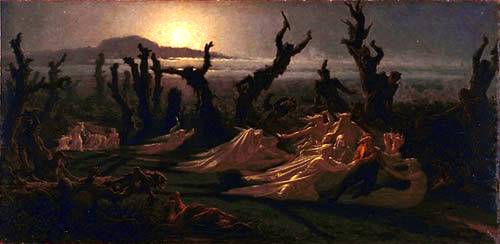



 To break down the old Norse Valkyrjur, Valr referred to the slain of the battlefield and kjósa, meant ‘to choose.’ Valkyrie translated to ‘Choosers of the Slain,’ a title that not only encompassed their choice of which warriors were granted Valhalla status, but who would die in battle. Valkyries didn’t shy away from invoking some heavy-duty black magics to ensure their choices came to fruition. In Njal’s Saga, there is an instance of twelve Valkyrie gathered around a loom, weaving fate like the Norns, though their materials are far grimmer. Here, the Valkyrie use intestines for thread, severed heads for weights, and swords and arrows for beaters, while they gleefully chant their hit list. The Saga of the Volsungs compares the sight of a Valkyrie to ‘staring into an open flame.’ To the Anglo-Saxons, they were spirits of carnage.
To break down the old Norse Valkyrjur, Valr referred to the slain of the battlefield and kjósa, meant ‘to choose.’ Valkyrie translated to ‘Choosers of the Slain,’ a title that not only encompassed their choice of which warriors were granted Valhalla status, but who would die in battle. Valkyries didn’t shy away from invoking some heavy-duty black magics to ensure their choices came to fruition. In Njal’s Saga, there is an instance of twelve Valkyrie gathered around a loom, weaving fate like the Norns, though their materials are far grimmer. Here, the Valkyrie use intestines for thread, severed heads for weights, and swords and arrows for beaters, while they gleefully chant their hit list. The Saga of the Volsungs compares the sight of a Valkyrie to ‘staring into an open flame.’ To the Anglo-Saxons, they were spirits of carnage.


 That’s one of the reasons I was attracted to Ragnarök Unwound, written by Kristin Jacques, author of Zombies Vs. Aliens and the upcoming Marrow Charm from Parliament House Press. Ragnarök Unwound is the story of Ikepela Ives, who is known as the Fate Cipher. The Fate Cipher’s job is to untangle the threads of fate. The only problem is Ives is the first part-mortal Cipher, and no one ever taught her how to use her powers. She runs away from her duty until one day, she can’t anymore. A Valkyrie locates her in a bar and pleads for her help in stopping Ragnarök, which has been set in motion. Jacques blends Norse and Hawaiian mythology for a truly unique tale filled with a unique ensemble cast.
That’s one of the reasons I was attracted to Ragnarök Unwound, written by Kristin Jacques, author of Zombies Vs. Aliens and the upcoming Marrow Charm from Parliament House Press. Ragnarök Unwound is the story of Ikepela Ives, who is known as the Fate Cipher. The Fate Cipher’s job is to untangle the threads of fate. The only problem is Ives is the first part-mortal Cipher, and no one ever taught her how to use her powers. She runs away from her duty until one day, she can’t anymore. A Valkyrie locates her in a bar and pleads for her help in stopping Ragnarök, which has been set in motion. Jacques blends Norse and Hawaiian mythology for a truly unique tale filled with a unique ensemble cast.




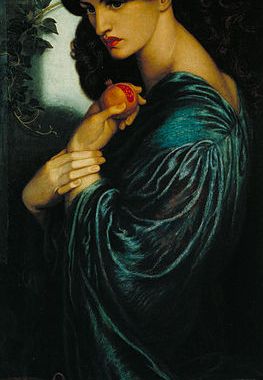
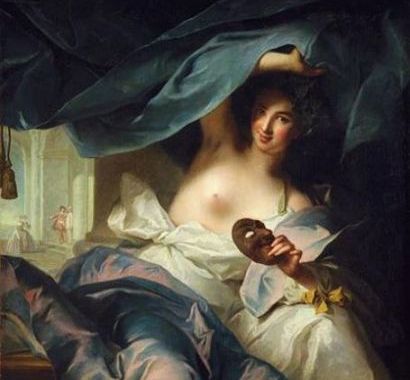

 important to the Eleusinian Mystery cult, the goddess was indeed desolate without her daughter. She was in great mourning when Hades stole away her daughter
important to the Eleusinian Mystery cult, the goddess was indeed desolate without her daughter. She was in great mourning when Hades stole away her daughter 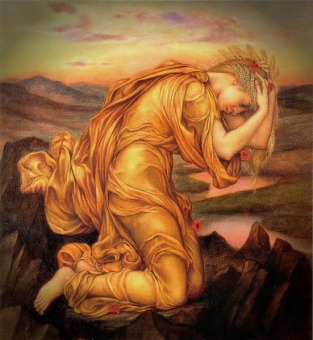 Seeing Demeter’s state, Iambê, true to her nature began to tease the mother goddess by telling jokes. Her use of humor brought a smile to Demeter, then eventually the mother goddess found herself laughing and enjoying herself. “Iambê, the one who knows what is dear and what is not, started making fun. Making many jokes, she turned the Holy Lady’s disposition in another direction, making her smile and laugh and have a merry thûmos.”
Seeing Demeter’s state, Iambê, true to her nature began to tease the mother goddess by telling jokes. Her use of humor brought a smile to Demeter, then eventually the mother goddess found herself laughing and enjoying herself. “Iambê, the one who knows what is dear and what is not, started making fun. Making many jokes, she turned the Holy Lady’s disposition in another direction, making her smile and laugh and have a merry thûmos.”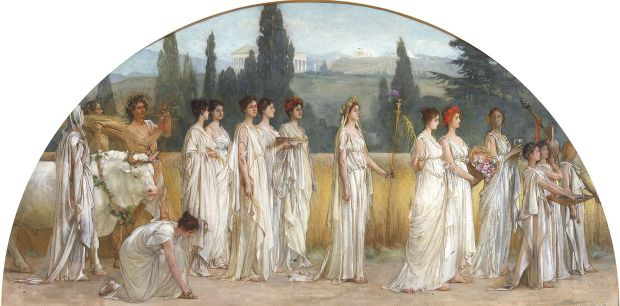
 ailing family member. Through the window comes the sound of a woman in the grips of deepest grief. She is unrestrained in her keening, raw with sorrow. It is not merely the mysterious sounds that fill you with fear, but also the knowledge that in the day that follows, a member of your household will pass from the world. The source of this wailing is a banshee. She is a fairy, though she is far from what a modern American imagination might summon up at the word: this is no mischievous winged sprite, but rather an omen given a woman’s form.
ailing family member. Through the window comes the sound of a woman in the grips of deepest grief. She is unrestrained in her keening, raw with sorrow. It is not merely the mysterious sounds that fill you with fear, but also the knowledge that in the day that follows, a member of your household will pass from the world. The source of this wailing is a banshee. She is a fairy, though she is far from what a modern American imagination might summon up at the word: this is no mischievous winged sprite, but rather an omen given a woman’s form.
 Like the ancient Celtic wife, the banshee too is a liminal being. Banshees usually appear at midnight, the liminal moment between two days, and represent a person’s passage into a sort of pre-death space in which they continue to live but are known to be near death. They also were heard from outside of homes, but never seem to enter them—the inverse of an ordinary woman, who would be strongly associated with hearth and home. Also like the ancient Celtic wife, the banshee has strained but important ties to the line of kinship: certain families were believed to be “followed” by a banshee. To be from a family followed by a banshee may have been a symbol of a certain rank and a point of pride.
Like the ancient Celtic wife, the banshee too is a liminal being. Banshees usually appear at midnight, the liminal moment between two days, and represent a person’s passage into a sort of pre-death space in which they continue to live but are known to be near death. They also were heard from outside of homes, but never seem to enter them—the inverse of an ordinary woman, who would be strongly associated with hearth and home. Also like the ancient Celtic wife, the banshee has strained but important ties to the line of kinship: certain families were believed to be “followed” by a banshee. To be from a family followed by a banshee may have been a symbol of a certain rank and a point of pride.
 The Sumerian Ereshkigal is one of the earliest examples of an underground death goddesses. She is featured prominently in the Descent of Inanna, as her sister who ultimately slays Inanna and hangs the body on a meat hook along the wall of the afterlife. Inanna’s journey to the underworld is a process of stripping away parts of herself, culminating eventually in the stripping of her very life. Ereshkigal slays her sister because all those who enter the underworld must experience death. “She who receive the me of the underworld does not return. She who goes to the Dark City stays there.”
The Sumerian Ereshkigal is one of the earliest examples of an underground death goddesses. She is featured prominently in the Descent of Inanna, as her sister who ultimately slays Inanna and hangs the body on a meat hook along the wall of the afterlife. Inanna’s journey to the underworld is a process of stripping away parts of herself, culminating eventually in the stripping of her very life. Ereshkigal slays her sister because all those who enter the underworld must experience death. “She who receive the me of the underworld does not return. She who goes to the Dark City stays there.” specifically linked to death, her nature is ultimately both primordial and dualistic. She existed before the world was created. Her identity is both the absence of light as well as the absence of order and one can further compare a symbolic connection to life and death cycles. Interestingly enough, Nyx is believed to have been the mother of the incarnations of light and day. Again, the dualistic existence is prominent. Cycles are of utmost importance as one exists alongside the other.
specifically linked to death, her nature is ultimately both primordial and dualistic. She existed before the world was created. Her identity is both the absence of light as well as the absence of order and one can further compare a symbolic connection to life and death cycles. Interestingly enough, Nyx is believed to have been the mother of the incarnations of light and day. Again, the dualistic existence is prominent. Cycles are of utmost importance as one exists alongside the other.